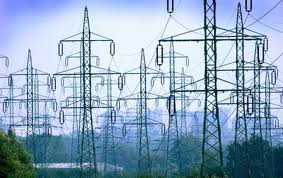SMEs may soon choose their power suppliers
Updated: Oct 07, 2013 11:48:46am

The proposed model will allow multiple companies to supply electricity through the same wire network without restriction. The network will be owned and managed by another company, probably a state-owned utility which will not be allowed to compete for power supply. This arrangement should facilitate implementation of the Open Access policy which allows consumers with more than 1 mw load to take their power supply from sources other than the local power distribution company (Discom).
While SMEs with more than 1 MW load can directly use open access route, those with less than 1 mw load can avail the policy by pooling their individual electricity requirements through an association.
In India, power distribution is currently undertaken by the same utility which also owns and manages local wire network. This arrangement creates conflict of interest in enforcing the Open Access policy which allows consumers with more than 1 mw load to take their power supply from sources other the local power distribution company (Discom).
The ministry is preparing a draft paper for consultations with states over the proposed model. “The draft document proposing separation of wire and power supply will be ready in a month’s time. After that, it will be circulated to states for consultations,” a senior power ministry official said. He hoped that the amendment Bill should be ready for tabling in Parliament in the Budget session.
The ministry has decided to adopt this radical change in power distribution model to ensure implementation of open access, which is meant to encourage competition in power retailing. A decade after the Electricity Act came into effect in 2003; open access policy still remains a non-starter despite best efforts by the Centre. Since majority of discoms in the country are owned by state governments, electricity commissions have been dragging their feet on enforcing open provisions.
The ministry recently issued advisory to state on implementation of open access in power distribution. However, there is little change on the ground. “There is no good news on open access from states,” a ministry official said.
States embrace or reject open access policy depending upon their own convenience. “When they (states) face power shortage, they allow outside power supply to come in. When there have enough power, they forget the policy,” an industry watcher said.
Power trading was introduced in 2001. Currently, the share of electricity sold in the free market is 10-12 per cent of total power generated in the country. Surplus power from eastern and western regions can be absorbed in electricity deficit northern and southern regions if states comply with open access provisions and allow free flow of electricity.
Industrial and commercial consumers can benefit a lot by sourcing electricity under this policy. For example, open access consumers can draw electricity supply during night hours when rates are much lower. SMEs in states like Tamil Nadu, Punjab and Haryana have benefit by adopting such innovative strategies in recent years.
There are provisions for allowing multiple supply networks in the Electricity Act. However, that is practically not possible due to lack of land availability in metros like Mumbai. That aside, it makes little economic sense to invest in multiple distribution network when a single network can be used by multiple power suppliers. The Maharashtra Electricity Commission tried to implement this multiple network model but failed for obvious reasons. (KNN/NM)












